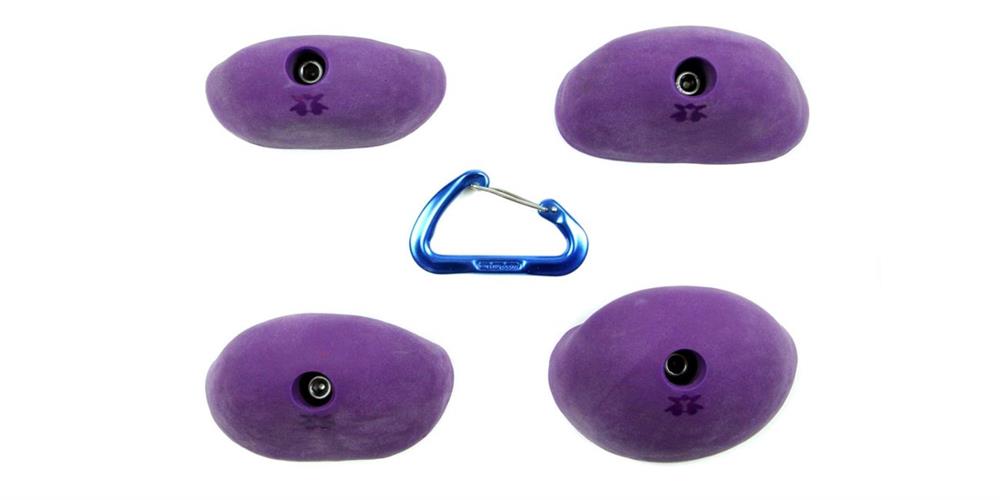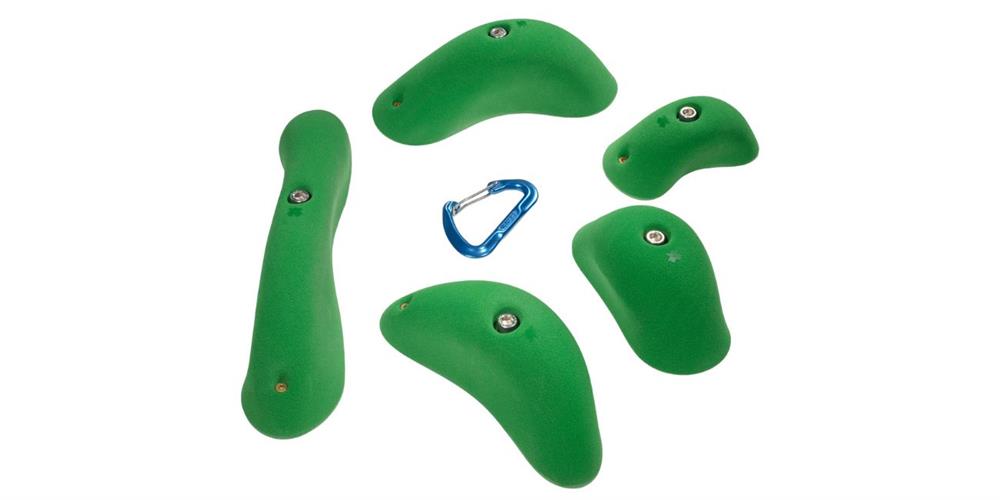Grip strength is your secret handshake with your rock wall. Your grip is crucial in bouldering as it dictates how well you cling to holds and maneuver through challenging routes. Consider these ten ways to improve grip strength for bouldering to gain a better handle on conquering your next vertical pathway.
Understanding Different Types of Grips
Before we get into exercises, let’s decode the language of grips. The crimp grip, your go-to for small, sharp edges, involves curling your fingers around a hold with your thumb over the index finger. This grip is great for new climbers or those needing more traction when climbing the wall. The open-hand grip, a less strenuous grip that involves keeping your fingers open, is perfect for larger holds.
The pinch grip is about squeezing holds between your thumb and fingers, ideal for volume and protrusions. The sloper grip challenges you with its rounded surface, requiring maximum contact and friction. Familiarize yourself with these grips for the first step in elevating your climbing game.
1. Basic Finger Strengthening Exercises
Your fingers are a vital part of any rock climbing experience, and like any muscle in the body, it’s possible to train them to grip holds with more might. Start with the basics to build a solid foundation.
Finger curls are a simple yet effective workout with room for improvement. Grab a light dumbbell, curl your fingers around it, and lift by balling and unbaling your fists. Repeat this for a set of reps to improve finger flexor strength.
Pair this exercise with finger extensions using rubber bands. Place a rubber band around your fingers and thumb, then spread your fingers apart. This exercise targets the extensor muscles, balancing out the flexors and preventing injuries. These introductory workouts set the stage for more advanced training using more equipment and complex exercises.
2. Advanced Hand and Finger Workouts
Your hand strength ties into your finger strength and supports your finger hold’s effectiveness. Hangboard training is a staple for serious climbers. Installing a hangboard at home allows you to safely practice different grips. Focus on short holds and include regular rest intervals to avoid injury.
Campus board routines take it further, providing explosive power and dynamic strength. Begin with foot-on exercises before transitioning to more challenging holds. These boards develop finger strength and improve contact strength, which is crucial for those ambitious bouldering projects you’ve been eyeing.
3. Forearm Conditioning Techniques
Your forearms are the strong connection between your hands and biceps. As you climb, your forearm channels energy from the rest of your arm to improve grip strength for bouldering and stabilizes the movement of its retraction when pulling yourself up.
Wrist curls and reverse wrist curls are your most reliable means of improvement. Use a lightweight grip and perform controlled curls with your wrists to strengthen both sides of the forearm. This exercise also strengthens your wrists and prevents sprains from overstraining.
Another fantastic exercise is farmer’s walks. Grab a heavy dumbbell in each hand and walk slowly, maintaining a firm grip throughout.

4. Developing Pinch Strength
The pinch grip is one of the more challenging aspects of grip strength to master. Start with pinch block exercises that help you practice holding heavy weights while relying on your finger and thumb.
Hold a wooden block or weight plate between your thumb and fingers as long as possible. Practice using climbing pinch holds of various sizes and shapes to train your muscles for handling different climbs.
Try plate pinch drills by pinching two weight plates together for variation. Improve endurance by pinching a rubber ball for a set amount of minutes before releasing and repeating.
5. Building Endurance With Static Holds
Endurance is key in bouldering, and static holds are your best friend. Dead hangs are a straightforward yet powerful workout that works out the whole arm. Hang from a bar or edge, keeping your shoulders engaged. Aim for longer durations over time.
Towel hangs are a great variation; loop a towel over a pull-up bar and hold onto each end, enhancing grip endurance and finger strength. These holds mimic real climbing scenarios and are vital for improving prolonged grip strength.
6. Incorporating Grip Strength Tools
There’s a world of tools designed to boost grip strength. Grip trainers and grippers are portable and effective, allowing you to work on your squeezing power anywhere.
Complement these with therapy putty, a versatile product that provides resistance to hand exercises and molding for various grip strengths. Fingerboards offer endless possibilities for the passionate climber. They allow you to practice various holds at home, simulating the demands of real climbing.
Another dynamic tool is rock rings. Their portable nature makes them perfect for workouts that require different angles and grips. Incorporate these into your routine to ensure your grip strength is well-rounded and climbing-ready.
7. Training With Resistance Bands
Resistance bands are versatile and valuable for grip strength training. Band pull-aparts target the back, shoulders, and grip. Hold a band at shoulder height and pull it apart, engaging your grip as you do.
Resistance band finger extensions are another excellent exercise. Attach a band to a sturdy object, loop it around your fingers, and extend them outward. These exercises enhance grip strength and overall upper-body conditioning.

8. Safety Tips and Injury Prevention
Before intense training sessions always warm up with techniques, such as finger stretches and easy climbing. Recognize signs of overtraining, such as persistent pain or fatigue, and allow your body adequate rest. Listen to your body; consistency is necessary to avoid injuries and maintain progress.
9. Incorporating Cross-Training for Comprehensive Strength
Cross-training complements your grip training by building overall body strength and flexibility. Yoga and Pilates enhance flexibility and core strength, which are invaluable in climbing.
Weightlifting, focusing on compound movements such as deadlifts and pull-ups, significantly boosts your body strength, supporting a powerful grip. Balance your training with these activities to create a comprehensive fitness routine.
10. Monitoring Progress and Setting Realistic Goals
Setting goals and tracking your progress will keep you motivated. Use grip strength metrics such as hold duration or lifted weight size to measure improvements. Adjust your training as needed, ensuring your goals are challenging yet attainable. Celebrate milestones to stay encouraged, and remember that every small improvement counts.
Grip strength is a fundamental aspect of bouldering that transforms your climbing experience. Integrate these tips and techniques into your training plan to master different grips, build endurance, and minimize injury risks. Stay consistent, set realistic goals, and push yourself to new heights with confidence in your grip like a pro climber.




Leave your comment